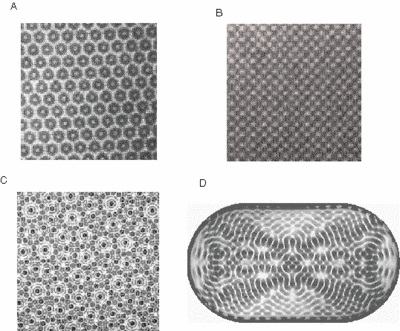To test for the causes, properties, and other effects of these sand dune booms, "Stéphane Douady of the French national research agency CNRS and his colleagues shipped sand from Moroccan singing dunes back to his lab to investigate."

A miniature landscape, cut from the whole, DHL'd back to the home lab for testing.
There, Douady's team "found that they could play notes by pushing the sand by hand, or with a metal handle."
The transformation of a sand dune – and, by extension, the entire Sahara desert, indeed any desert – even, by extension, the rust deserts of Mars – into a musical instrument.
Music of the spheres, indeed.
"When the sand avalanches, the grains jostle each other at different frequencies, setting up standing waves in the cascading layer, says Douady. These waves reinforce one another, making the layer vibrate like the surface of a loud speaker. 'What's funny is that in these massive dunes, only a thin layer of 2 or 3 centimetres is needed to set up the resonance,' says Douady. 'Soon all grains begin to vibrate in step.'"
Douady has so perfected his technique of dune resonance that he has now "successfully predicted the notes emitted by dunes in Morocco, Chile and the US simply by measuring the size of the grains they contain." The music of the dunes, in other words, was determined entirely by the size, shape, and roughness of the sand grains involved, where excessive smoothness dampened the dunes' sound.

I'm reminded of the coast of Inishowen, a peninsula south of Malin Head in the north of Ireland, where the rocks endlessly grind across one another in the backwash of heaving, metallic, grey Atlantic waves. Under constant pressure of the oceanic, the rocks carve into themselves and each other, chipping down over decades into perfectly polished and rounded spheres, columns, and eggs – as if Archimedean solids or the nested orbits of Kepler could be discovered on the Irish ocean foreshore –

– all glittering. The rocks, I later learned, were actually semi-precious stones, and I had a kind of weird epiphany, standing there above the hush and clatter of bejewelled rocks, rubbing and rubbed one to the other in the depopulated void of a coastal November. It was not a sound easy to forget.
Because the earth itself is already a musical instrument: there is "a deep, low-frequency rumble that is present in the ground even when there are no earthquakes happening. Dubbed the 'Earth's hum', the signal had gone unnoticed in previous studies because it looked like noise in the data."
Elsewhere: "Competing with the natural emissions from stars and other celestial objects, our Earth sings like a canary – it drones on in a constant hum of a gazillion notes. If it were several octaves higher, and hence, audible to the human ear," it could probably get recorded by the unpredictably omnidirectional antennas of ShortWaveMusic and... you could download the sound of the earth.
Free Radio Interterrestrial.
[Note: the "drones on" link, a sentence or two back, offers a contrary theory (published in 2000) about the origins of these planetary soundwaves.]
Which, finally, brings us to Ernst Chladni and his Chladni figures, or: architectonic structures appearing in sand due to patterns of acoustic resonance.
Architecture through sound, involving sand. Silicon assuming structure. Desert harddrive, humming.
The gist of Chladni's experiments involved spreading a thin layer of sand across a vibrating plate, changing the frequency at which the plate vibrated, and then watching the sand as it shivered round, forming regular, highly geometric patterns. Those patterns depended upon, and were formed in response to, whatever vibration frequency it was that Chladni chose.




So you've got sand, dune music, terrestrial vibration, some Chladni figures – one could be excused for wondering whether the earth, apparently a kind of carbon-ironic bell made of continental plates and oceanic resonators, is really a vast Chladni plate, vibrating every little mineral, every pebble, every grain of sand, perhaps every organic molecule, into complex, three-dimensional, time-persistent patterns for which we have no standard or even technique of measurement. Or maybe William Blake knew how to do it, or Pythagoras, or perhaps even Nicola Tesla, but...
The sound dunes continue to boom and shiver. The deserts roar. The continents hum.
No comments:
Post a Comment